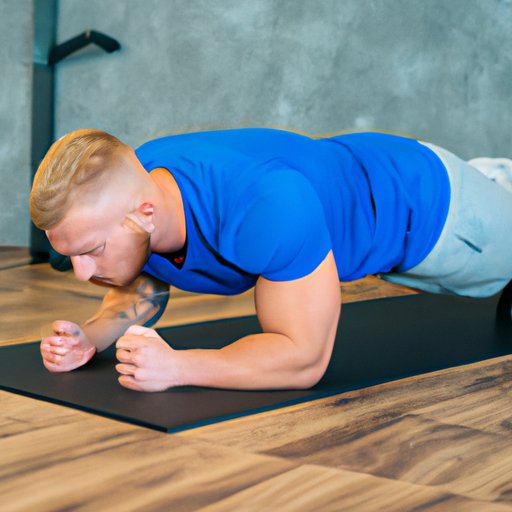
Mastering the Perfect Push-up: A Step-by-Step Guide
If you’re looking for a way to build upper body strength and tone your muscles, look no further than push-ups. Not only can they be done without equipment, but there are endless variations to keep your workout routine interesting. In this article, we’ll guide you through the proper form and introduce different push-up challenges to keep you motivated, no matter your fitness level.
Benefits of Push-ups
Before we dive into proper form and variations, it’s important to understand the benefits of push-ups. They work multiple muscles at once, including your chest, shoulders, triceps, and core. Additionally, they’re a great way to build upper body strength and increase muscle endurance.
Whether you’re just starting out or a seasoned fitness enthusiast, push-ups are a great exercise to strengthen your upper body without any equipment.
Step-by-Step Guide on How to do Push-ups Correctly
When it comes to push-ups, proper form is crucial to avoid injuries and maximize results. To do push-ups correctly, start in a plank position with your hands slightly wider than shoulder-width apart. Keep your toes on the ground and your body straight, with your core engaged. Lower your body towards the ground while exhaling until your chest is almost touching the floor. Pause for a second and then push up back to a plank position while inhaling.
Make sure to maintain a straight line from your shoulders to your heels throughout the exercise. Most importantly, keep your elbows close to your body and avoid letting them flare outwards. Your hands can be angled slightly inward, but make sure your wrists are straight to avoid strain.
Check out instructional videos or look for images that show proper push-up form to get a better idea of how to maintain proper form throughout the exercise.
Common Mistakes to Avoid When Doing Push-ups
Even when you think you’re doing push-ups correctly, there may be some common mistakes you’re making that can cause injuries or decrease the effectiveness of the exercise. One of the most common mistakes is positioning your hands too far outwards, which can strain your wrists and shoulders. Another mistake to avoid is arching your lower back or having your hips too high, which can put too much pressure on your lower back or push-ups from focus of working on the upper body.
To avoid these mistakes, angle your hands slightly inward to avoid straining your wrists and shoulders, and keep your body completely straight while engaging your core to avoid arching your back or raising your hips too high.
Variations of Push-ups for Individuals with Different Fitness Levels
If you’re new to push-ups or feel you’re not quite ready for a full push-up, there are many modifications you can try to build strength and endurance. Wall push-ups and knee push-ups are both great options for beginners. Alternatively, incline push-ups are a little more challenging but still gentler than performing full push-ups.
For those who are looking for a challenge or want to vary their routine, there are also many challenging variations such as diamond push-ups, plyometric push-ups, and one-arm push-ups.
Incorporating Push-ups into a Workout Routine
If you’re interested in incorporating push-ups into your daily workout routine, it’s important to start slowly and gradually work your way up. Begin with a few push-ups per day, and gradually increase the number you do each day. For example, try doing ten push-ups every day for one week, then increase to fifteen push-ups for the next week.
Be wary of overdoing it and always listen to your body. If you feel fatigued, take a day off and let your muscles rest before resuming your push-up routine. Avoid doing push-ups every day and aim for two to three times a week.
Fun Challenges to Motivate Readers
Whether you’re a beginner or a seasoned fitness enthusiast, push-up challenges can help motivate you and your fitness routine. A 30-day push-up challenge is a popular way to build strength and endurance. Ideally, this challenge involves doing push-ups every day, and gradually increasing the number until you’ve reached your goal.
Other fun challenges include trying to perform push-ups with a partner, doing push-ups on different surfaces or variations, and seeing how many push-ups you can do in a specific time frame.
Conclusion
Push-ups are a versatile and effective exercise that can be done anywhere and without the need for equipment. By mastering proper form, identifying and avoiding common mistakes, and trying out variations, you can easily incorporate push-ups into your workout routine and enjoy improved upper body strength and muscle toning. Don’t forget to challenge yourself with fun push-up challenges to keep yourself motivated and feeling accomplished.





